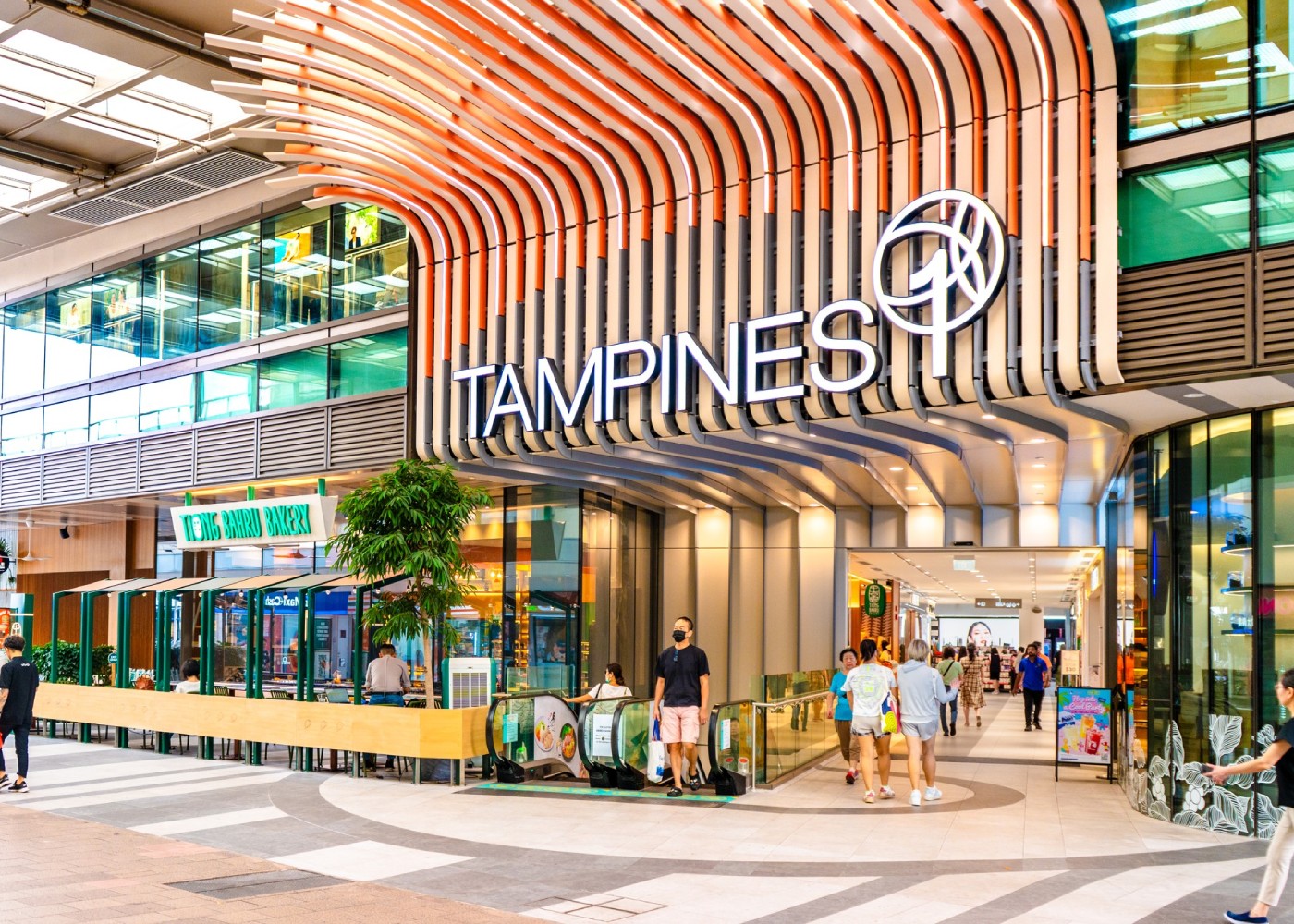Sumu’s Off-Grid Innovations: A New Era of Regenerative Housing in Japan
Published on October 15, 2024 | by DSGN arcHive
Join us on Japan’s Yakushima Island as we connect with the visionary behind Sumu to get the full story.
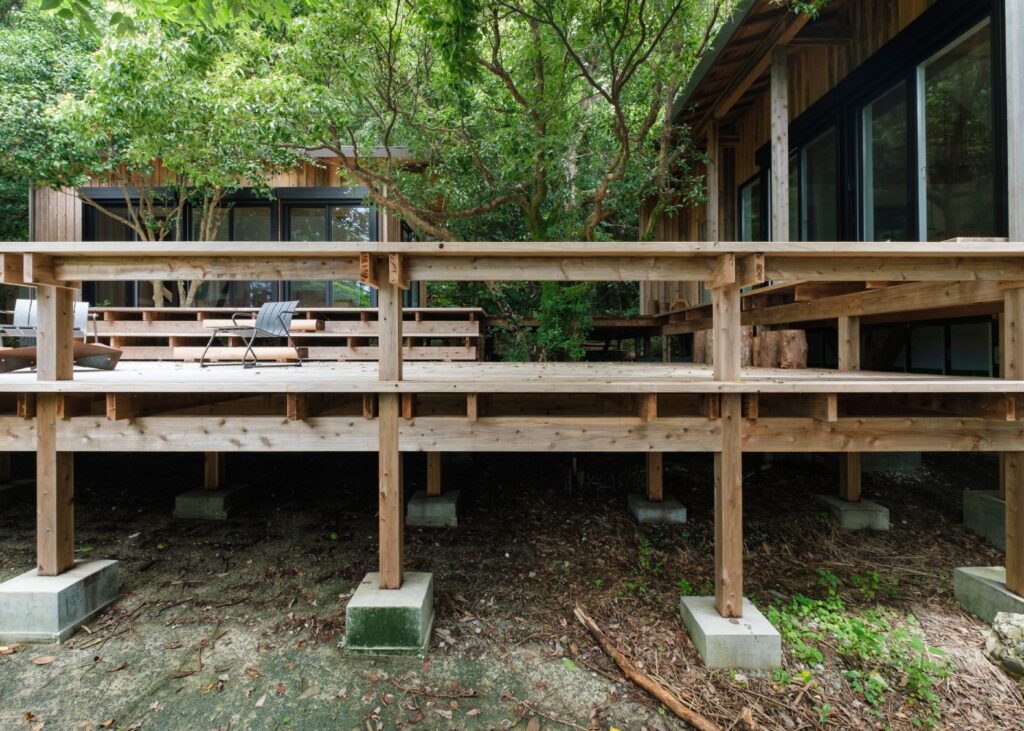
Imagine living in a place where simply going about your daily life could help the environment thrive. That’s the ethos behind Sumu, a housing co-op nestled on Japan’s Yakushima Island. This isn’t just about living sustainably—Sumu’s regenerative design means that residents are part of a process that revitalizes the natural world around them, creating a lifestyle that’s in harmony with nature.
We had the pleasure of chatting with Tsukasa Ono, the Representative Director of tono Inc. and the creative mind behind Sumu. He shares the story behind this pioneering project, explaining how Yakushima’s unique environment shapes the co-op’s design, and how blending age-old Japanese techniques with modern technology has crafted a space where living and nature work hand in hand. This innovative approach has not gone unnoticed, as Sumu recently won the SG Mark Gold at the Singapore Good Design Awards 2024! Join us in celebrating a vision that transforms architecture into a force for environmental regeneration.
The Regenerative Vision Behind Sumu
1. Could you explain the inspiration behind the concept of Sumu and how the name encapsulates the philosophy of the housing co-op?
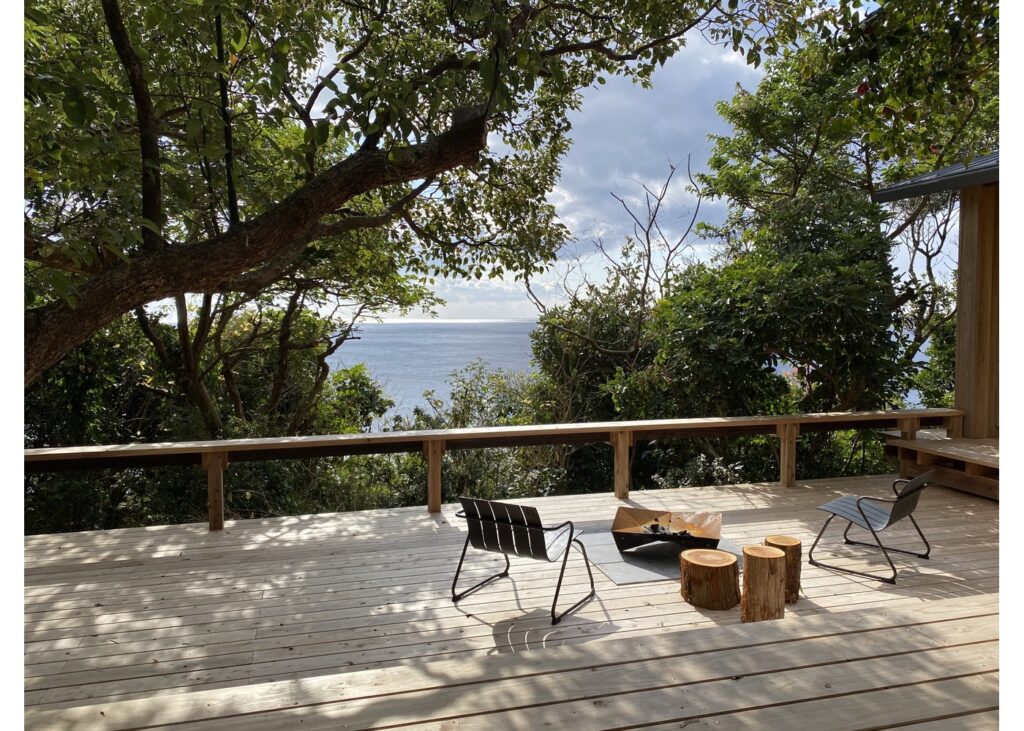
The concept of Sumu is that the more people live there, the clearer the nature becomes. “Sumu” means “to live” and “to become clear” in Japanese. In Yakushima, over tourism has caused a phenomenon in which the more people come, the more the nature is damaged. On the other hand, there is a lack of people, and the unmaintained, untended forests are damming the water and weakening the flow of the river, so we were looking for a way to solve this mismatch. At Sumu, methods for clearing nature are included in the lifestyle, and the more guests come, the more the circulation of nature is promoted, leading to learning for coop members and guests.
2. Sumu is deeply rooted in regenerative architecture. How does this architectural approach differ from traditional sustainable practices, and how does it influence the design and function of the co-op?
So far, sustainable architecture approaches have focused on reducing damage to nature. Our approach is an attempt to improve the surrounding environment by constructing a building. Regenerative Architecture is both a construction method and a way of continuing to engage with nature through architecture and the site. Co-op members and guests take care of the building and the surrounding nature while living there, and obtain fuel by picking up fallen branches. In other words, they incorporate regenerative ideas into our lifestyles.
3. Yakushima Island seems integral to Sumu’s concept. How do the unique characteristics of the island shape the architecture and the way people live within this co-op?
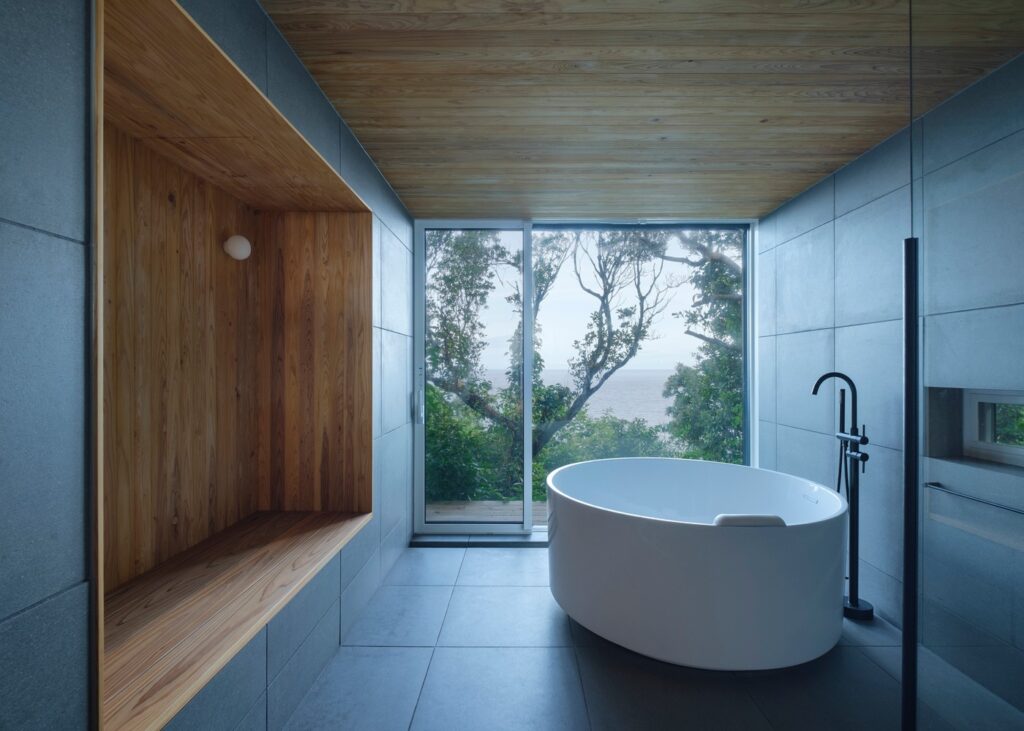
Yakushima has 10 times the world average rainfall, and the distance from about the 2000m mountain peaks to the sea is only 10km, making it an island where the circulation of water is very visible. We came up with the idea of architecture that coexists with this circulation without stopping it. However, this is not a concept unique to Yakushima. This is because most people on Earth live within the circulation of water from the mountains to the sea. We refer to this area as a “watershed.” Our goal is to make the smallest unit of the community one in which people respect and cooperate with each other in both the upstream and downstream areas and live within the blessings they receive.
4. Off-grid energy sources are a key feature of Sumu. Can you share some insights into the specific technologies and methods that power the co-op sustainably?
Sumu has achieved off-grid electricity through solar power generation and storage batteries. It has decided not to use any fossil fuels. It is also important to have achieved high airtightness and insulation to reduce energy loss. People tend to focus only on electricity, but they also use firewood, and are able to survive by circulating resources available within this local watershed. Also, when there is a shortage of electricity, we change our lifestyle by lighting candles or going to a nearby hot spring.
5. You’ve blended traditional Japanese civil engineering with modern technology. Could you share some examples of how these two approaches have been harmonised in the design and construction of Sumu?

We learned about a shocking method of traditional Japanese civil engineering that utilizes soil microorganisms, connects them to surrounding trees through a mycelium network, and strengthens the ground with the roots of the trees. Traditional shrines and old stone-paved roads built using this method have not collapsed even after hundreds of years. We learned from those who preserved this tradition and considered how we could make it happen on our own land. However, we found that the construction was a high hurdle, with time, cost, and the need to call in craftsmen with special skills from outside the island. Sumu’s construction uses modern tools and machinery, and has been simplified and redesigned to be accessible to local craftsmen, meaning if this method works, it can be deployed worldwide.
Furthermore, architecture that utilizes traditional ideas tends to reject modern ideas and technology. We incorporated latest technologies that would allow ordinary city dwellers to live comfortably, and created a modern design that would allow people to enjoy the contrast with the natural beauty of Yakushima.
6. Living in a way that positively impacts the landscape is a central idea at Sumu. How do the residents interact with and contribute to the ongoing regeneration of their environment?
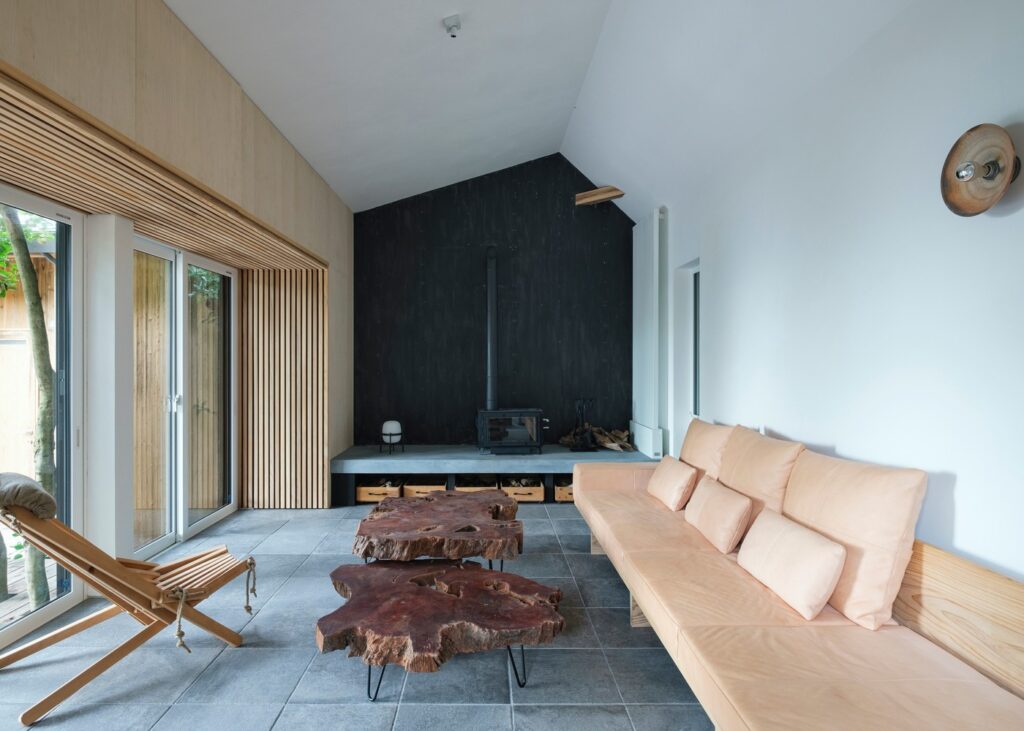
The important thing is to live while having fun. It cannot be sustained by a sense of duty alone. We use driftwood and firewood obtained from clearing desolate forests to chat around a wood stove and bake delicious pizza. We mow the grass to let the wind through, encourage a comfortable breeze on the deck, and eliminate stagnation to prevent the breeding of mosquitoes and pests. It is a lifestyle that utilizes technology to achieve comfort, but does not rely too much on technology, but rather receives the blessings of nature from the river basin and circulates them.
7. Looking ahead, what do you hope the long-term impact of Sumu will be, both on Yakushima Island and as a model for future housing developments?
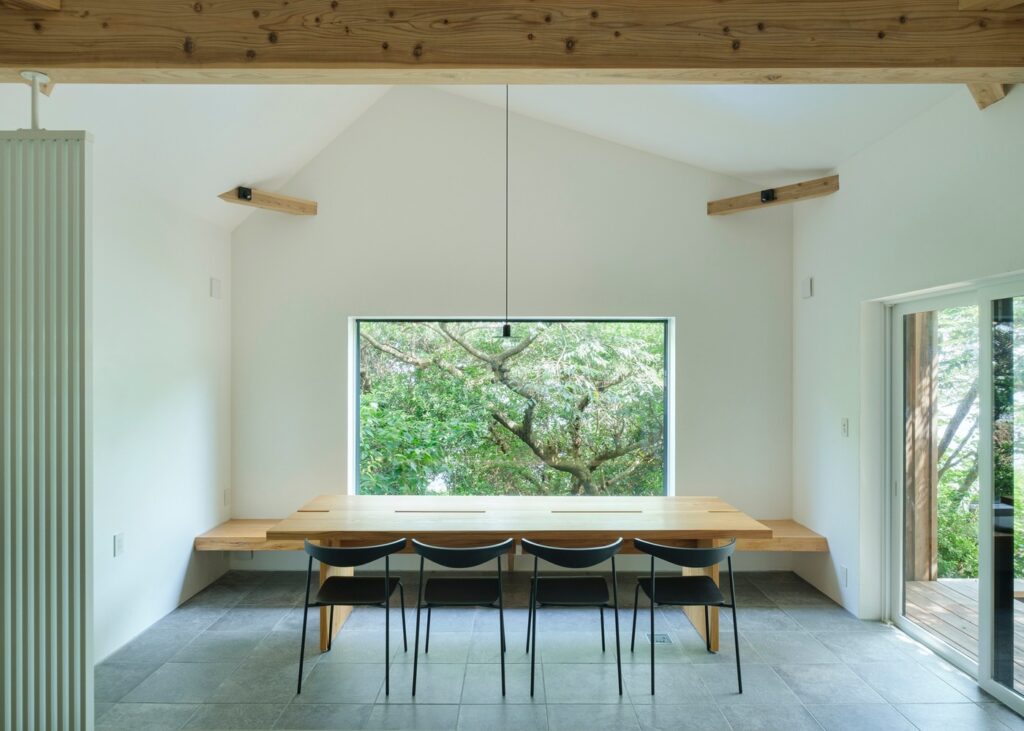
We want to spread this solution not only to Yakushima but to the world. It can be applied to all areas where it rains. Moreover, we hope that the concept of Sumu will change people’s perspectives. In other words, from sustainable to regenerative. It is a change from anthropocentric to earth-centric thinking. Building architecture while connecting with soil bacteria means connecting with the earth, that is, the earth’s systems. It is about realizing that you are part of nature and the earth itself. When this change occurs, we hope that it will have a huge positive impact that goes beyond being a simple architectural technique.
Thank you, Tsukasa, for sharing your invaluable insights into Sumu. And a huge congratulations once again on the well-deserved win at the Singapore Good Design Awards 2024!
If you’re a designer with a standout project ready to make its mark, now’s your chance! Enter the SG Good Design Awards and let your work shine in the spotlight—click the link to find out more!
Wondering what we’re up to next?
Give us a follow and stay in the loop!
About DSGN arcHive
DSGN arcHive is your exclusive key to unveiling the enigmatic essence of a city, all filtered through the prism of design. Far from the ordinary tourist paths. We reveal the city’s architectural marvels, urban intricacies, cultural tapestry, and eco-conscious revolutions that mold its distinctive soul. With us, you’re invited to savor the metropolis in an entirely chic and sophisticated light, a city that’s far more than what meets the eye.
Copyright © 2025 DSGN arcHive


